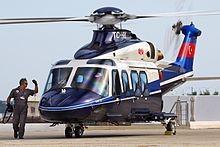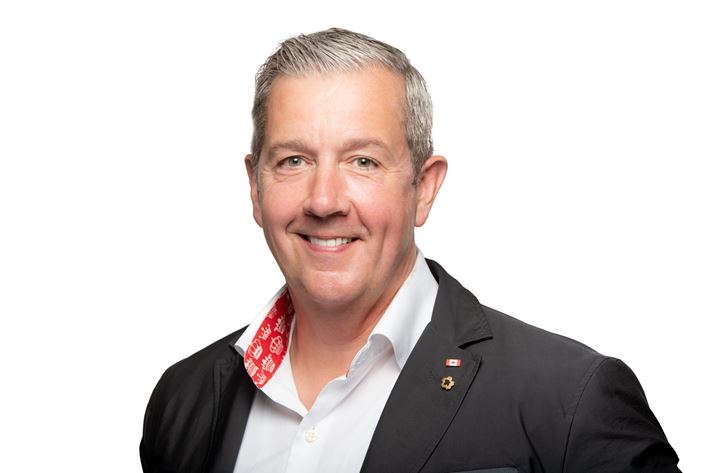Cape Breton 2.0, Charting course for a better tomorrow

Caleb Gibbons, Official nominee, federal Liberal nomination race, Sydney-Victoria, Nova Scotia, Canada.
- Re-build a robust, island-based economy. Regional tech expertise hub and push for special economic zone (SEZ) status to attract both Ocean Supercluster investment and new foreign direct investment (FDI).
- Reversal of the chronic population decline through enticing our sons and daughters back home from away, continuing merit-based immigration and increasing retention targets upon graduation of the foreign student intake at Cape Breton University (CBU).
- Address persistent income equality issues and intertwined child poverty issues.
On the first day, God created Cape Breton. Some think it would be nice if he’d come back to check on us, every once in a while.

Our now threadbare tartan was designed in 1957 by Elizabeth Grant of Glace Bay, a mere two years after the opening of the Cape Breton Causeway, an engineering marvel in its day, requiring over one million tonnes of material to fill in the sixty-five meter deep Canso Strait, a natural moat that existed prior. Since then we’ve been tethered to mainland Nova Scotia, but the outbound lane of the causeway, leaving our native Cape Breton, has seen much more wear in recent years. Our island has lost 30,000 of our sons and daughters to outmigration over the last 30 years.
Two core colour themes of our tartan are but memories, albeit strong ones; grey for Cape Breton forged steel and black for Cape Breton’s coal seams. Today Cape Breton has only 132,000 people, with 95,000 living in the Cape Breton Regional Municipality (CBRM), Nova Scotia’s 2nd largest municipality. The loss to our community has not only been in terms of population.
Amalgamation, the merging of our smaller communities from where our roots lie in an attempt to achieve financial and service efficiencies, together with urban migration are global phenomenon that require well thought out decisions that must be supported by our communities. And the massive loss of our talented sons and daughters seeking better opportunities in other parts of Canada and the world through outmigration has given us Cape Bretoners’ our own unique challenges. As seen with the legacy coal mines and steel plant where our families once proudly worked for generations, there is always the risk of a distant controlling owner of a major industry one day deciding to cease operation in the name of corporate efficiency, without fully considering the impact on the thousands of families and the communities effected.
Painful experience has shown us that to chart a sustainable course to prosperity going forward in Cape Breton, homegrown solutions are required with a strong, vibrant middle class being a key source of economic growth. Our middle class provide the stable consumer base for goods and services that drive sustainable productive investment by small and medium sized businesses. A healthy middle class also provides the foundation for broad civic engagement in our communities that in turn produces better governance, and improved educational opportunities. Government can and must jointly develop, along with our local communities and businesses, an environment that creates the conditions for success with respect to the growth of free enterprise. For example, despite the American economy and population being 10 times bigger than Canada’s, we are now attracting more tech talent than the US, in absolute terms. The 100km Toronto-Waterloo tech corridor now ranks in the top 20 in the world. In our own Cape Breton, the number of recent tech start-ups now exceeds 60 businesses.
Atlantic Canada’s private sector led Ocean Supercluster will harness emerging technologies to strengthen ocean industries; marine renewable energy, fisheries, aquaculture, defense, shipbuilding and transportation.
Cape Breton is at a critical digital intersection between North America and Europe. Digital government was the responsibility of Scott Brison MP until his departure from politics earlier this year (Scott moving in the opposite direction to myself, i.e. politics to banking as Vice Chair at BMO). Cape Breton would make an excellent base for a 200 person Digital Government office, aiding a tech ecosystem ready to embrace the roll out of 5G, rather than cowering in fear at what lies ahead.
A large portion of Cape Breton's economy is of course seasonal. We must not only play the cards we are dealt, but more effectively engage the other players at the table. This seasonality factors into many of our decisions on critical infrastructure.
This week's hot topic is of course the proposed Inverness Airport. I, for one, think an Inverness Heliport makes a lot more sense; Capex for a heliport is a fraction of what even a simple all weather single runway would cost (not to mention operating costs). A typical operation would include 5 AW 139's that carry a crew of 2 (one is legal except for offshore work) and space for 13 passengers (3 foursomes and a bit). Normal range for the AW 139 is 500km or 5 hours endurance. This could service Inverness, Ingonish (recall Highland Links is also a top 10 course) and Baddeck for much less than the cost of one single runway airport in Inverness. Those that visit our jewel of an island will pollenate more of their tourism dollars broadly if we allow them to see more of it (and stay longer of course). The business case would be sound at the current passenger forecast for Cabot Cliffs/Links. Operating costs are around $2k per flight hr. excl. fuel. The air traffic control could be handled by existing airports on the island (Sydney and Port Hawkesbury) with Visual Flight Rules employed by flight crews. In terms of broader use for the island, a heliport would be used for medical emergencies as well as offshore search and rescue. The Canadian Air force (CAF) have AW 101's stationed at Gander and Shearwater. A new CB heliport could be a staging base for the air force to refuel and if rescuing a large number of people (i.e. a cruise ship), drop people off it, refuel and head back out for duty. In the "off" season this could be used by the Canadian Coast Guard College, perhaps as part of the 1 year Peacekeeping Certificate I have written about with their recent expansion.

The proposed Port of Sydney container port make 100% sense and should be supported with vigor by all with a interest in the prosperity of the island. Even at stage 1 scale of 1 million TEU, this could drive 1,000 full time, good paying, jobs (unionized longshoremen). Rail is part of the solution as the port does not happen without it. The difficult pieces of the puzzle are in place; a natural port that can accommodate ships to 18,000 TEU capacity, environmental sign offs and First Nations buy-in (in fact significant involvement in the operation of the facility's logistics park, and potentially the rail offtake).
Private Members Bill:
Impaired Driving — Monetary Fines To Apply To Any And All Vehicle Passengers
My first order of business, should I be successful in my bid to become the new Member of Parliament representing Sydney-Victoria, NS, would be to propose a bill to amend those sections of the Criminal Code (offenses related to conveyances) relating to penalties for impaired driving.
My bill would make all passengers of a vehicle operated by an impaired driver subject to monetary fines matching those applied to the vehicle operator with a minimum fine of $1,000. All individuals directly involved in the decision to let an impaired person drive (be it from alcohol, cannabis and/or prescription drugs) are responsible and held liable.

Peer policing is the basic concept here. Family, friends and community share responsibility when they directly know that someone may be committing a crime and they have the means to prevent such an action. One of the strongest pluses of this potential legislation is its ease of implementation. All existing allowable limits, fines and, where applicable, censure in terms of loss of driving privileges and/or jail time remain intact. A strong global precedent exists for this policy and the resultant reduction in highway fatalities could prove substantial (upwards of 40%).
New means of achieving improved road safety are even more critical in Sydney-Victoria, given the inherent perils of secondary roads which, on balance, are in ill repair, with less street lighting, less enforcement due to low population density with poorer driving conditions due to weather.
Expanding our vast road system, largely via twinning, at considerable expense is not the only way to reduce road fatalities and injury (more than 1/3 of which involve impaired drivers). This proposed law change would be tantamount to a prohibition from riding in vehicles driven by an impaired driver and would, I truly believe, go a long way towards preventing many of the tragedies that occur when someone gets behind the wheel when he or she shouldn’t.
On the campaign trail since early March, provincial healthcare provision has been the biggest concern of Sydney-Victoria constituents. The 2nd biggest is the conditions of the roadways. We need a deep dive on this topic for certain (municipal, provincial and federal) and I can not address it in an appropriate word count in this overview, but as an island, we have options others do not. We can not forecast a ramp in NS tourism ($4bln from $2.6bln) and offer up the road infrastructure we currently have, full stop. Timetables for repair and upgrades need to be moved up. A bond issue securitized by a roadway improvement fee (RIF) charged to non-residents entering via the causeway is but one avenue we should explore.
Only time will tell what colours will make up our island tartan in twenty years’ time for our children and grandchildren, but we should ensure a high thread count, as the winds of change blow stronger now than they have for generations. Global trade disputes, border walls being built between trading partners, and increased global nationalism that has seen the rise of extremists leaders and parties appears to be the norm in many countries. This is neither the Cape Breton way of getting things done, nor the way we treat our friends, our neighbours, or visitors to our highland shores.
The challenges we face in Cape Breton are similar to those faced by other communities and countries around the world. Due to outmigration, our Cape Breton has an aging population quite similar to that of Japan, where I used to live and work. Today, one out of every four people in Japan are over 65 years of age and by 2050 it is projected 40% of the Japanese population will be over 65. Unless we in Cape Breton address the root causes of our population decline, it is likely that we will follow a similar path , a further shrinking and aging population, unable to provide the opportunities for our young people and facing a decline in services that we all worked hard to provide for those most in need. Fortunately, Canada has been moving in the right direction and offers Cape Breton a blueprint on how we might change course.
Canada now has a population of 37 million, with the last million added at the quickest pace in the history of the country. With most of us now having smaller families than in previous generations, much of our country’s population growth has been through immigration. Our successful merit-based immigration programs helped to attract talented young people to build businesses and build new lives within our expanding Canadian family. This has been a lesson that some nations are unable to learn, for instance foreigners make up less than 2% of Japan’s population versus 24% foreign born in Canada, which is testament to our welcoming nature. This is not to say that our immigration pathway is without need for improvement, but at least we are moving in the right direction.
Cape Breton and Sydney-Victoria need to figure out a way to jump on greater-Canada’s bandwagon in reversing our population decline because our economic life depends on it. Growing our population and economy and providing greater economic opportunities will move more of our families into the middle class. To get back to a population of 160,000 over the coming decade, we will need to nearly double the population growth rate of Cape Breton versus the rest of Canada (2.1% vs. 1.2% respectively). The smaller families that we have today will not be able to meet this population growth target. There were eight kids in my mother’s family when she grew up in New Waterford, she had three kids and I have two. The Canadian average is 1.6 now. We will need to entice back home our sons and daughters now living elsewhere in Canada, the US and indeed the world who have become part of the remittance economy, we all know that they want to be here if the opportunities are available.
The two other sources to drive population growth in Cape Breton is to focus on attracting those young families looking for a viable alternative to the high cost, high stress big city life west of Cape Breton (no slight intended to our kin in Newfoundland) from both the “Rest of Canada” and the “Rest of World”.
Targeted, merit-based immigration programs like the one to bring UK and Commonwealth doctors to our smaller communities is beginning to bear fruit. In addition, the foreign student intake at my alma mater Cape Breton University (then UCCB) is proving a much needed boost for the local economy and will eventually see increased numbers of graduates settle here. CBU is now the 2nd most diverse university in Canada after University of Toronto. The areas of excellence continue to grow in areas such as nursing where CBU grads have some of the best licensing exam pass rates in the country. The retention rate for nurses exiting the CBU program is a robust 85%.
On metrics of fiddlers per capita (#1 Inverness) and golf course quality (3 of the country’s top 10 in latest rankings) Cape Breton is rolling in clover. On some other metrics we still have some wood to chop, as they say. Although the national unemployment rate currently sitting at 45 year lows, Cape Breton’s unemployment rate is 10% higher at a staggering 16.7%.
A further challenge is addressing child poverty rates. The recently expanded Canada child benefit (CCB) has brought the national child poverty rate to below 10%, but the child poverty rate in our native Cape Breton is over 30%. There are over 4,500 children in the Sydney-Victoria riding alone living below the poverty line. We must do better on this front. These children are our country’s future and none of them, as Canadians, in 2019 should ever face the pain and indignity of poverty given the abundance that God has given us in this country.
In terms of the relative distribution of income between capital and labour, the pendulum appears to have swung a bit too far in favour of capital. Income inequality is an issue globally and Canada can show leadership on this front. Efforts towards a guaranteed basic income are now official policy of the Liberal Party of Canada. Conservative Doug Ford recently cancelled the latest pilot, but I can not think of a better large scale pilot than Cape Breton Island. Newark, NJ is undertaking the largest such pilot program in the US. There are of course competing proposals, including a negative tax rate regime. We will not be able to perform the analytics without the data, which requires a large enough pilot being allowed to run its' full term (typically 3 years).
Going forward we need to go beyond the patchwork of programs that have been attempted in the past. Free enterprise, while not perfect, has held the key to Canadian progress since the end of World War II and represents the most likely path to future growth. The sharp contrast between opportunities in Cape Breton and the rest of Canada argues for a bolder plan to build up a larger and more vibrant financial ecosystem to foster long term economic growth here. I see working towards Cape Breton becoming a special economic zone (SEZ), with long-term tax and other incentives for businesses to make Cape Breton their long term home, as a base to compete in the Canadian, American and indeed global markets. A thumb on the scale causing a tilt in Cape Breton’s favour would see more of the Ocean Supercluster businesses (110 in Atlantic Canada and growing) and generally more foreign direct investment come to our island.
I will utilize my international experience and considerable finance acumen to work through the complex issues facing Canada that have a direct effect on the constituents of Sydney-Victoria. I commit to provide a strong voice in Ottawa on the issues constituents voice as their most pressing, from day one until the mandate to represent voters is taken from me.
I am looking to earn the right to serve as your voice in Ottawa. Friends and neighbours, you will always have my ear, and Cape Breton, you will always have my heart. Caleb #JCG






0
Log In or Sign Up to add a comment.- 1
arrow-eseek-eNo items to displayFacebook Comments